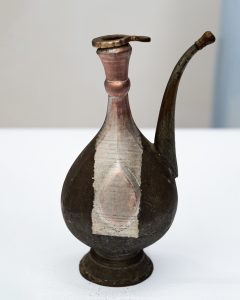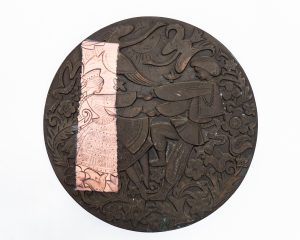Laser-assisted cleaning is widely used in car repair for the removal of oxidation damage, rust, or paint layers as well as for cleaning engine parts. This technology is extremely superior in cleaning car parts that require extreme precision and are adjacent to fragile glass, plastic, or rubber surfaces. The technology is also suitable for various chassis repair work.
Applications
Automotive industry
Electronics
Laser cleaning is used to remove layers of wire insulation, paint, glue, varnish, or other coatings as well as for the removal of anodized surfaces. The technology is suitable for surface preparation before welding or soldering and for the removal of thermal damage done to the surface after welding or soldering.
Plastics, tyres, or moulds for casting
The laser cleaning technology is of great advantage in cleaning plastic and rubber moulds for casting. The most important advantages include the preservation of the surface of the mould for casting, high cleaning speed, and exceptional equipment reliability. No foreign substances are used in the laser cleaning process. Therefore, both the casting moulds and the working space remain clean, thus ensuring the highest quality of products.
Aviation
In the manufacture and repair of aircrafts, using laser cleaning technology varnish or paint coatings are efficiently removed by avoiding any thermal or mechanical damage to housing surfaces. Laser cleaning systems can be used to remove paint from a fixed area or paint that has been applied on impact-resistant materials such as canvas.
In the field of aeronautics, laser cleaning technology completely eliminates use of usual chemicals that are harmful to the environment and operator.
In aviation, laser cleaning technology can be used:
- For accurate, fixed area paint removal for manufacturing or repair purposes
- For preparation of the site for fasteners before gluing
- For cleaning glass and carbon fibre composites
- For cleaning aluminium and titanium parts
- For cleaning turbine blades
- For surface degreasing
Metals
Laser-assisted cleaning enables precise oxidation, thermal damages, and paint layers removal from metal products. Properly set laser cleaning equipment fulfils the ISO SA 2.5 surface cleanliness standard requirements. Additionally, the laser cleaning process does not thermally or chemically affect the base metal surface. Therefore, it is an excellent technology for processing surfaces that require special cleanliness and precision.
Aluminum
Laser cleaning technology is most commonly used in the cleaning of aluminium plates or parts. This technology allows to preserve surface details without mechanical or thermal contact, which would typically be unavoidable using standard methods such as sandblasting or dry ice cleaning. Due to its reliability and accuracy, laser cleaning technology is often used in aviation. Laser cleaning technology is eco-friendly, does not require the use of harmful chemicals, and is characterized by reliability and minimal maintenance and operation costs.
Cleaning of paint and graffiti
Laser cleaning systems are used to remove the effects of spray paint (graffiti) without damaging the original surface. This technology is perfect for removing the effects of fire and deposits avoiding any possible damage to the material being cleaned. Laser cleaning technology is the ideal solution for the restoration or renovation of fragile building facade parts, sculptures, and monuments.
Main laser cleaning technology advantages compared to other cleaning methods:
- No damage is caused to the base material or the surface texture
- Low operating costs
- Eco- and user-friendly technology – no additional chemicals or abrasives are used in the cleaning process
Food industry
The laser cleaning technology allows easy cleaning of baking trays, mould, fungus, oil, deposits, and conveyors eliminating need of chemical use and avoiding any mechanical damage to cleaning surfaces. Femta can offer laser cleaning systems that are ideal for cleaning plates and textured baking tins made of various metals and plastics. It is possible to perform laser cleaning procedure in conveyor belts without interrupting the production process.
Examples of cleaning uses:
- Cleaning of moulds for confectionary products and waffles
- Cleaning of production manufacturing equipment, tools, and transportation systems
Works of art restoration
Laser cleaning is widely used in the field of restoration for building facades, frescoes, sculptures, or even paintings. This unique technology makes it easy to remove sediment and dirt layers by avoiding any mechanical or chemical aftereffects to base material. For this reason, laser cleaning technology is probably the only viable solution in restoring works of complex shape or works with surfaces that are sensitive to moisture/friction. The greatest advantage of laser cleaning technology is that it preserves texture of extremely fragile materials, such as paper or canvas, and thus can revive the colours of the work that were hidden under a layer of soot and dust, giving the piece a second life.
Laser cleaning can be used to restore/renovate:
- Bronze and silverware
- Wall paintings – to reveal frescoes hidden under a layer of paint or plaster
- Figures and ornaments of stone, plaster, ceramics, or plastic
- Wood carvings, articles, furniture, or sculptures
- Products of marble, granite, shell rock, terracotta, plaster, or concrete
- Canvas or textile works—by removing dust deposits, varnish, or paint layers with the help of laser light
- Old brittle bricks, plaster, or brittle walls covered with paint
- Glassware and stained glass
Contact us to find out more about laser cleaning technology!





